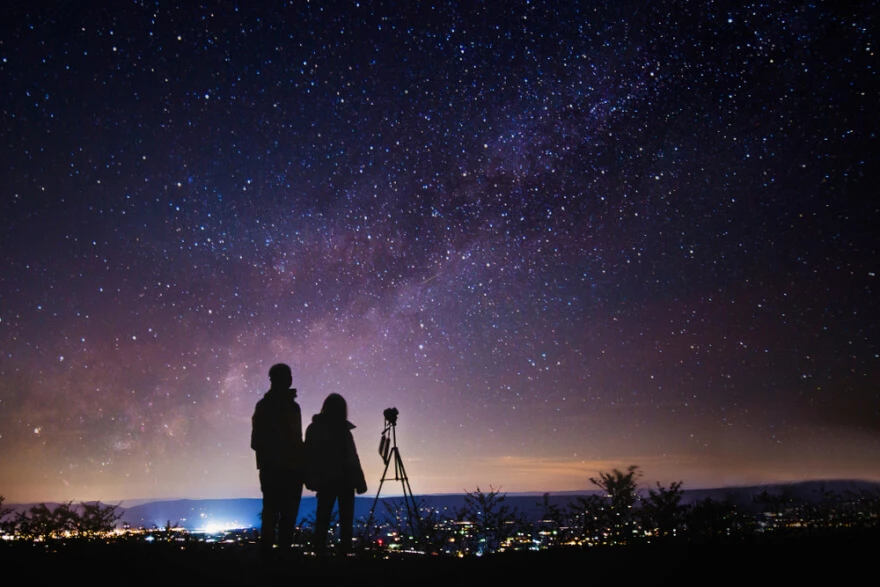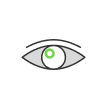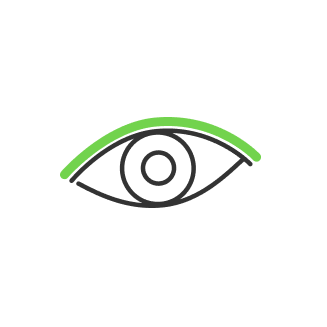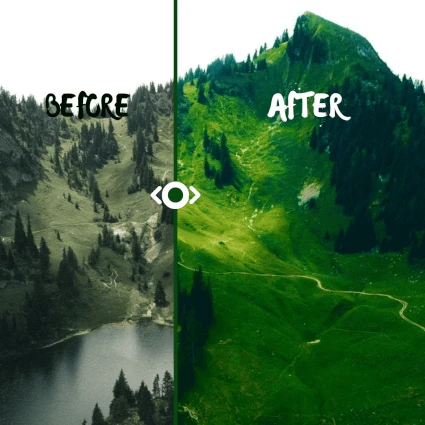Telescope for Astrophotography

- 1. What is the best telescope for astrophotography?
- 2. Main criteria for the best telescope for astrophotography
- 1. Long-focus refractors
- 2. Short-focus refractors
- 3. Long focus reflectors
- 4. Short focus reflectors
- 5. Mirror-lens optical system (catadioptric)
- 3. Common mistakes when choosing the best cheap telescope for astrophotography
- 4. How to choose the best camera for telescope astrophotography?
Astrophotography is one of the most exciting and popular trends in modern amateur astronomy. And of course, this type of shooting entails a question about which telescopes to buy for astrophotography. This section contains telescopes that will make it possible to quite successfully astrophotograph both planets of the solar system and objects of deep space like star clusters, nebulae, and galaxies. In addition to a suitable telescope tube optical system, the mount design also plays an important role. To obtain impressive results, you need a high-quality and lifting equatorial mount, which has drives for tracking the rotation of a starry sky or the ability to retrofit the mount with drives that can be purchased separately.
It's no secret that a telescope for visual observation and a telescope for astrophotography is not always the same items. When used in astrophotography, the tube must have a number of technical characteristics or parameters that either do not play a role at all in the visual or have little effect. Therefore, many novice amateurs, having read manuals on how to choose a telescope for astrophotography, are still asking the question "Well, what is a good starter telescope for astrophotography?" It's time to figure out what you need to consider when choosing the best object for a great sky view, as well as analyze a few specific examples of items.

Let's start with terms. Surely, if you want to observe a specific star or moon, then you have come across such a concept as "Astrograph". In simple terms, an astrograph is a telescope for shooting, but if you delve a little into the essence of a concept, then an astrograph is a survey complex that includes a telescope, a camera, and a guide. That is, it is the entire shooting setup, the foundation of which is a telescope tube. As an astrograph, almost any optical tube model can be used, capable of producing a high-quality picture with a minimum of distortion and defects.
Let's clarify right away that today we will talk about serious shooting aimed specifically at the result, and not about perversions and collective farms that allow you to shoot at least somehow and at least something. Therefore, we will not even touch such options as shooting with an iPhone through the telescope eyepiece. All this does not go beyond the scope of pampering with a telescope and cannot claim serious results. We are looking for quality, so it is important to choose the right telescope right away so that later you do not waste time trying to somehow adapt it to shooting.

So let's take a look at what exactly makes a good telescope for astrophotography.
The first point is the focus. It must be able to focus in direct focus with a camera. Many owners of reflectors are familiar with the problem in which, having docked the camera to a telescope, we cannot focus, because the focuser either does not sink deep enough into the tube or does not twist far enough. In the second case, you can simply use the extension sleeves and that will be enough, but in the first case you need to raise the main mirror in your frame, and then the focal length will shift, and the focuser will not need to be immersed so deeply.
The second point is the absence of elements that spoil the picture and various image defects, such as spherical aberration, chromatic aberration, rainbow halos, and just a soapy picture. The presence of such disadvantages almost destroys the potential and leads us to another category. That is why, it is better to take a look at refractors, newtonians with adapters or high-aperture spherical mirrors.
The third point is the telescope's optimal characteristics. First of all, this is the relative aperture. The option should not be too dark, otherwise, the deep light accumulation process can be severely slowed down. Size is also an important parameter, it includes weight and length. When shooting from a balcony, it is important to have a small telescope for astrophotography. When leaving the city, the pipe, in addition to its size, should preferably also be light.

1. What is the best telescope for astrophotography?
Contrary to popular belief, magnification is not the most important indicator of an item. Moreover, this parameter can be controlled using different eyepieces. It is easy to determine magnification when choosing a necessary option: divide the focal length of the hole by the focal length of an eyepiece. But not the whole spectrum of the obtained value is useful.
Let's take a simple example. Refractor telescope with a 1000 mm lens focal length and 4 mm eyepiece. The multiplicity for such a device will be x250. The useful magnification limit is equal to the aperture (diameter of glass) multiplied by two. If the diameter is 120 mm, then the limit value for the comfort ratio will be x240.
When trying to determine which is the best type of telescope for astrophotography, consider the minimum useful approximation, which is equal to aperture divided by 6. For a lens of the same diameter, it will be x20 (120/6). This means that an approximation of less than 20x will be less than your pupil diameter, so it will not provide new visual scope.

To obtain an aperture ratio parameter for a specific device, it is necessary to derive the ratio of the aperture to a focal length of a lens. When deciding on an affordable budget, you can use the example: for a 120mm /1000mm device, the aperture will be 1/8.3. For convenience, you can use division of devices into groups:
- 1/6 or more. The so-called "fast" options, which are well designed for shooting the night sky, since they provide a minimum exposure;
- 1/6-1/8. Category of high-aperture devices used to observe extended objects;
- 1/8-1/10. Universal devices for which it is worth purchasing several eyepieces with a different focus;
- less than 1/10. Such devices are called telephoto and allow you to explore compact and/or the most distant objects.

2. Main criteria for the best telescope for astrophotography.
- Optical design. Telescopes are specular (reflectors), lens (refractors), and mirror-lens.
- Aperture. The larger the diameter, the greater the telescope aperture and resolution. The more distant and dim objects can be seen in it. On the other hand, the diameter greatly affects the size and weight of an item. It is important to remember that the maximum useful magnification physically cannot exceed 1.4 of its diameters. Those with a diameter of 70 mm, the maximum useful magnification of such a telescope would be ~ 98x.
- The focal length is how far the telescope can focus. Long focal lengths mean more magnification, but a smaller field of view and aperture. Suitable for a detailed review of small distant objects. Short focal lengths mean small magnifications but large fields of view. Suitable for observing extended objects such as galaxies and the Orion constellation.
- A mount is a method of attaching a telescope to a tripod:
- Azimuth (AZ) rotates freely in two planes like a photo tripod.
- Equatorial (EQ) a more sophisticated mount that can be adjusted to the pole and allows you to find celestial objects, knowing their hour angle. This tripod is ideal for reflectors that are intended for objects in deep space, invisible to the naked eye
- Dobson mount (Dob) is a type of azimuth mount, but more adapted for astronomical observations and allows you to install larger telescopes on it.
- Automated computerized mount for automatic guidance to celestial objects, uses GPS.

Another step is to get a detailed description of the pros and cons of best telescopes for deep space astrophotography.
1. Long-focus refractors.
+ Closed pipe (no need to clean as there is no access for dust)
+ Large focus (convenient for observation, photography of moon and planets)
+ Do not "go blind" (there is no mirror that fades over time)
+ Great clarity for viewing objects at short distances
- Items with large lenses are very expensive
- A multi-element lens may become misaligned over time (adjustment required)
- "Delicate" antireflection coating
- Heavy lens and tube weight
- Unsuitable for an entry-level astrophotography

2. Short-focus refractors.
+ Large aperture for observing faint extended objects (nebula, comet, galaxy)
+ Short and closed pipe (does not take up much space, does not need to be cleaned as there is no access for dust)
+ Do not "go blind" (there is no mirror that fades over time)
+ Inexpensive
+ Sharpness at close range
- The multi-element lens may become misaligned over time (adjustment required)
- "Delicate" antireflection coating
- Heavy lens and tube weight
- Unsuitable for observing planets due to distortion at high magnifications

3. Long focus reflectors.
+ Very low price
+ Lightweight with a large lens diameter
+ Large magnifications for observing planets
- Distortion (objects are surrounded by a halo)
- The working field of view is limited
- Unsuitable for astrophotography in the main focus due to low aperture
- Over time "goes blind" (there is a mirror that fades)
- Sometimes requires adjustment (settings)

4. Short focus reflectors.
+ Low price
+ Lightweight with a large lens diameter
+ Large field of view
+ Large aperture for observing faint extended objects (galaxies and nebulae)
+ Suitable for main focus astrophotography (requires addition - coma corrector)
+ Short pipe (more compact)
- Less convenient for observing planets
- Over time, "goes blind" (there is a mirror that fades)
- Sometimes requires adjustment (settings)

5. Mirror-lens optical system (catadioptric).
+ Significantly less distortion compared to reflectors
+ Suitable for ground observation
+ Compact tube with long focal length (more possibilities with less weight and volume)
+ Closed pipe (no need to clean as there is no access for dust)
- More expensive than refractors and reflectors
- Can't get a wide field of view on some models
- Before starting observations, you need to equalize the temperature with the temperature of the environment so that there are no image defects

What can you see with the best beginner telescope for astrophotography?
- Aperture 60-80 mm
Lunar craters from 7 km in diameter, star clusters, bright nebulae.
- Aperture 80-90 mm
Phases of Mercury, lunar grooves 5.5 km in diameter, rings and moons of Saturn.
- Aperture 100-125 mm
Lunar craters from 3 km to study clouds of Mars, hundreds of stellar galaxies, the nearest planets.
- Aperture 200 mm
Lunar craters 1.8 km, dust storms on Mars.
- Aperture 250 mm
Satellites of Mars, details of the lunar surface of 1.5 km, thousands of constellations, and galaxies with the possibility of studying their structure.

3. Common mistakes when choosing the best cheap telescope for astrophotography.
- The higher multiplicity, the better. This depends on how and in what conditions the item will be used, as well as on its aperture (diameter of the objective).If you are looking for a beginners telescope for astrophotography, you should not chase high magnification. Observing distant objects requires a high degree of training, knowledge, and skills. The moon and planets of the solar system can be observed at a magnification of 20 to 100x.
- Purchase of a reflector or a large refractor for observations from a balcony or the window of a city apartment. Reflectors are very sensitive to atmospheric fluctuations and extraneous light sources, so they are extremely impractical to use in urban conditions. Refractors with a large aperture always have a very long tube (for example, with an aperture of 90 mm, the tube length will exceed 1 meter), so their use in city apartments is not possible.
- Buying an item on an equatorial mount to try for the first time. The equatorial mount is quite difficult to learn and requires some training and skills. If you are an aspiring astro enthusiast, we would recommend purchasing an azimuth mount or a Dobson mount.
- Buying cheap eyepieces for serious equipment and vice versa. The quality of a resulting image is determined by the quality of all optical elements. Installing a cheap budget optical glass eyepiece will negatively affect image quality and color. Conversely, installing a professional eyepiece on an inexpensive instrument will not produce the desired result.

It is important to mention that without special devices, even the most powerful Celestron or Meade telescope cannot fully reflect the life of a starry sky. It is impossible to point the item at the object, see it, and even more so to photograph the object without an appropriate accessory. All accessories can be divided into several groups.
- Eyepieces. Probably the most significant group of accessories, because it is the eyepieces that create the very image of every object that we look at. Eyepieces differ in focal length, eye relief, and field of view. Depending on these indicators, they are used to observe the moon and planets, binary stars, star clusters, planetary nebulae, or galaxies. Ultra-wide-angle eyepieces with a field of view of 82-120 degrees are used for surveying stellar fields and extended nebulae.
- The Barlow lens increases the focal length, increases the scale of an image when photographing planets, saves on the purchase of new eyepieces, since it is used together with existing eyepieces, doubling or tripling the magnification of any of them.
- Light filters. The range of use of light filters is very wide. Color filters allow you to observe the surface of planets, improving detail. Selective transmission filters increase the contrast of an image, eliminating the negative influence of urban light. A solar filter must be purchased to observe the Sun. Glass or film, it will protect your eyesight and allow you to see granulation, spots, and torches on a sun disk. Often, accessories for visual observation are sold in kits, which may include eyepieces, Barlow lenses, and light filters.
- Crawlers are used to find the monitored object. An optical, collimator or laser has a function to ensure that the observer confidently and accurately aims the tube at the object he needs.
- The mount can also be called an accessory. Its task is to ensure the stability of the device, smooth and accurate aiming at the object, its accompaniment in the process of observation or photography. Mounts are azimuthal and equatorial, auto-guided, or simple mechanical, on tripods or columns. Depending on optical characteristics, tasks, and operating features, you can always choose the optimal mount.
- The telescope often has to work in high humidity and low-temperature environments. Misting or freezing of the lens, eyepieces and other telescope elements occurs. Hoods, anti-weeds, heaters for lenses, eyepieces, and other accessories are designed to prevent moisture from forming on the working surfaces of the instrument.
- Storage and transportation of astronomical equipment are impossible without appropriate trunks, bags, cases, and capes.
Besides you may also need accessories such as:
- adapter T2-ring for shooting in direct focus;
- special astronomical DSLR;
- smartphone holder for eyepiece photography;
- laser collimator for telescope alignment.

Other important points of interest
Doublets and triplets are names given to sorts of essential focal points found in very good quality refractor telescopes. Doublets are included with two bits of glass, while triplets are fabricated from three pieces. Making an ideal triplet focal point takes additional time and exertion (for example cost) than for a doublet. Triplets have chromatic variation superior to doublets, so give better picture sharpness. Triplets are heavier thus take more time to adjust and chill off than doublets, which makes them less functional for a casual beginner.
Slow and Fast Ratios
The central proportion of a telescope is its central length divided by its aperture. For instance, a telescope with a 150mm and a 900mm has a central proportion of 900mm/150mm = f/6.
This becomes significant relying upon the sort of article you need to picture. Blackout articles that require a huge field of view to be imaged well, similar to cosmic systems and nebulae, are best finished with a 'quick' proportion, which is anything with a f/proportion under 5. More slow proportions, above f/8, or something like that, are better for more splendid items like the moon and planets.
Field Flatteners and Focal Reducers
Central reducers do precisely what you'd expect – they diminish the central length of a telescope they are appended to. This implies you can expand the field of view measure and reduce the introduction times required for your shots.
Field leveling is a component of most central reducers. The regular bend of a focal point prompts a picture twisting at the edge of the field of view when the focal point of your view is entirely sharp. Field flattener makes the stars directly on the edge of your picture more honed than they would be, bringing huge improvements to the quality of your finished result.

4. How to choose the best camera for telescope astrophotography?
- For a schoolchild of 8-10 years old, you can purchase an inexpensive and easy-to-use refractor device from a special children's series with an aperture of 70 mm on an azimuth mount. An additional adapter for a camera will allow him to take beautiful pictures of the moon and terrestrial objects.
- For novice explorers of a night sky, it makes sense to take a closer look at a lens with a diameter of 60-70 millimeters. If you think you will be spending a lot of time on such a hobby, it is better to get Dobson equipment with an 8-10 inch lens. It is an inexpensive, portable reflector with a large aperture, simple unguided altazimuth setup and very convenient design.
- For observations within the city, it is better to buy a short-focus refractor with an aperture of 70-90 mm on an azimuth stand.
- For travelers or those who intend to frequently transport their item, light and reliable mirror-lens apparatus equipped with a Dobson system or an azimuth mount is needed. You can also opt for an inexpensive 4-inch mirror device. For cheaper analogs, the Schmidt-Cassegrain telescope with a 6-8 inch objective is the best option.
- If your dream is to study distant galaxies and nebulae, get a reflector with a lens diameter of 250 mm or more, complete with an azimuth stand. For observation of objects in deep space, the size of the lens is extremely important, and the price of a telescope with an 8-inch lens is an order of magnitude higher than the price of a telescope with a mirror reflector of the same size.
- Experienced astrophotographers cannot do without a catadioptric telescope with a maximum aperture (400 mm) and a long focus from 1000 mm. It is better to choose an equatorial mount with an automatic drive.

At present, serious amateurs of astrophotography are conventionally divided into “planetary” and “deep sky”.
The first ones are equipped with rather powerful items with a mirror diameter (200-300 mm and more) and a high-speed but sensitive astronomical camera in color or black and white. A black and white camera is naturally preferable, but it will naturally have to be fitted with a color filter wheel.
Latter photographs with long exposures of hazy objects. There is a much wider range of tools available, from small, high-quality telephoto lenses. As with planetary observations, here black and white cameras are out of competition, and of course, you will have to equip a wheel of color filters.
Observers of the Sun deserve separate words. Previously, hobbyists limited themselves to observing and photographing sunspots and granulation. Now with the advent telescopes and their analogs, showing the observer the Sun in a narrow band of the hydrogen Hα line, allowing you to enjoy the view of prominences on any clear day!
Co-founder of RetouchMe. In addition to business, he is passionate about travel photography and videography. His photos can be viewed on Instagram (over 1 million followers), and his films can be found on his YouTube channel.
Moreover, his profile is featured on the most popular and authoritative resource in the film industry — IMDb. He has received 51 international awards and 18 nominations at film festivals worldwide.

with RetouchMe














